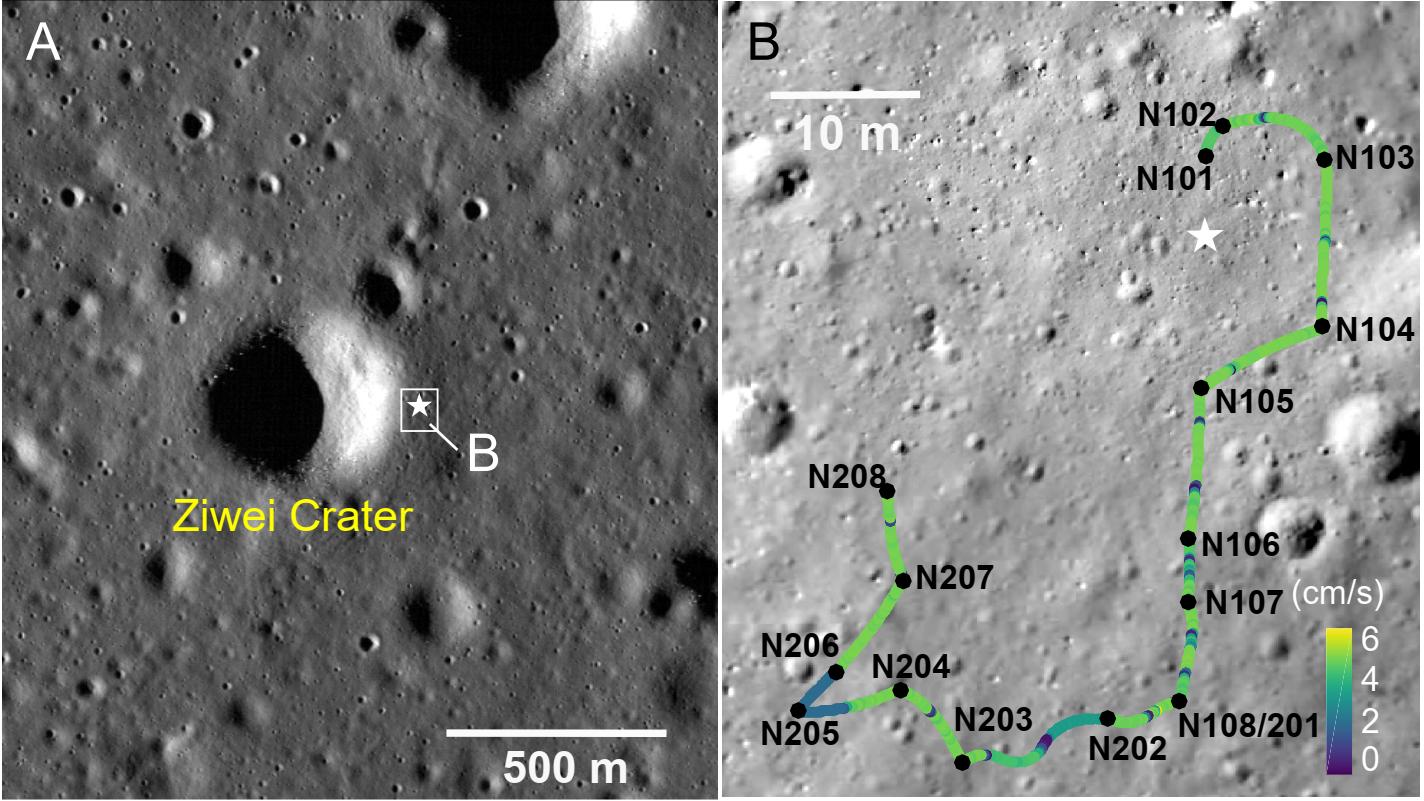In 2022, Science published "A shortage of tritium fuel may leave fusion energy with an empty tank", reporting that there is a severe shortage of tritium fuel for nuclear fusion. While helium-3, another fuel for nuclear fusion, could hold millions of tons on the Moon. Taking this opportunity, researchers from the Institute of Advanced Study (IAS) of Shenzhen University and the Interdisciplinary Research Center of Deep Space and Deep Earth recently calculated the helium-3 resource content of lunar regolith within about 445 square meters of the landing area using the lunar penetrating radar observation data, which provides an idea for studying the estimation of shallow lunar regolith resource reserves. Meanwhile, researchers discussed the possibility of replacing tritium fuel with helium-3 fuel from the perspective of economic, which gives reliable evidence for the exploitation of surface resources in the future.

Figure 1. The Chang’E-3 landing site and the traveling path of the Yutu rover
The research team published the research paper titled " Moon-Based Ground Penetrating Radar Derivation of the Helium-3 Reservoir in the Regolith at the Chang'E-3 Landing Site" in《IEEE Journal of Selected Topics in Applied Earth Observations and Remote Sensing》(JCR-Q2; Impact factor: 4.734). Prof. Ding Chunyu, member of the core team of Chang'E-4 mission are the first author and co-corresponding author. Prof. Shaopeng Huang, College of Civil and Transportation Engineering, Shenzhen University is a co-corresponding author. Prof. Qingquan Li, Shenzhen University, Prof. Yan Su, National Astronomical Observatory, Chinese Academy of Sciences, and Dr. Jiawei Li, Senior Engineer, Center for Lunar Exploration and Space Engineering, National Space Administration, are co-authors.

Figure 2. Distribution of helium-3 reserves in the lunar regolith at the Chang'E-3 landing site
The Chinese Chang’E-3 mission is the "landing" mission in the established "orbit, landing and return" trilogy strategy of China's lunar exploration project. The Chang'E-3 probe landed in the northeastern part of mare Imbrium on the nearside of the Moon, which is the first probe to achieve a soft landing on an extraterrestrial body in China (Figure 1). The lunar penetrating radar carried by the probe provided valuable data for the study of the subsurface structure of the landing area. In our study, the distribution of lunar regolith thickness was calculated by high-frequency radar data. Based on the relationship between the helium-3 content and TiO2 content measurement from lunar samples, together with the physical properties below the lunar surface of the landing site detected by Chang'E-3 radar, the helium-3 content of lunar regolith in the area of about 445 m2 at the Chang'E-3 landing site was calculated to be ~37-51 g (Figure 2). Meanwhile, the paper also estimates that the cost of mining to obtain 1 gram of lunar helium-3 is about $10,000 at most. Assuming that helium-3 fuel replaces tritium fuel (the current price of tritium fuel is $30,000/gram), the future mining of lunar helium-3 resources might be economically beneficial.
This study was supported by the National Natural Science Foundation of China (No.42241139 and No.42004099), the Key Laboratory of Lunar and Deep Space Exploration of the Chinese Academy of Sciences (No. LDSE202005), and the Shenzhen Municipal Government Investment Project (No.2106-440300-04-03-901272).
Link: https://doi.org/10.1109/JSTARS.2023.3253499


